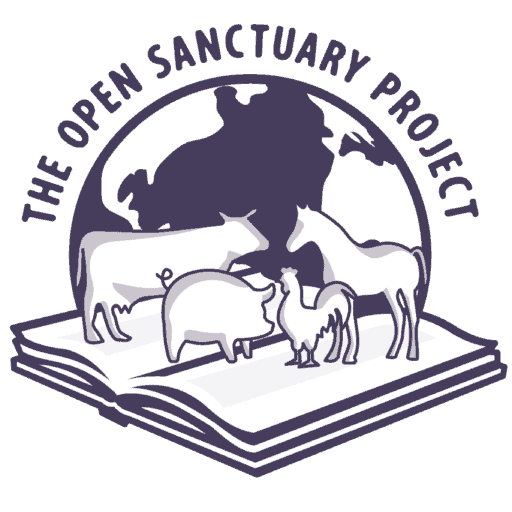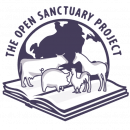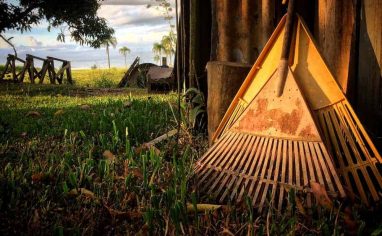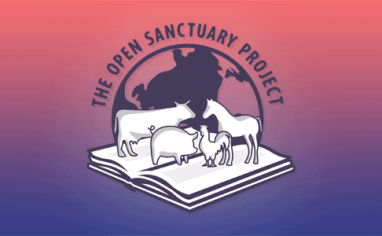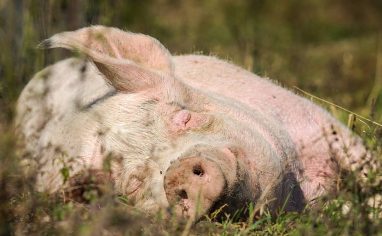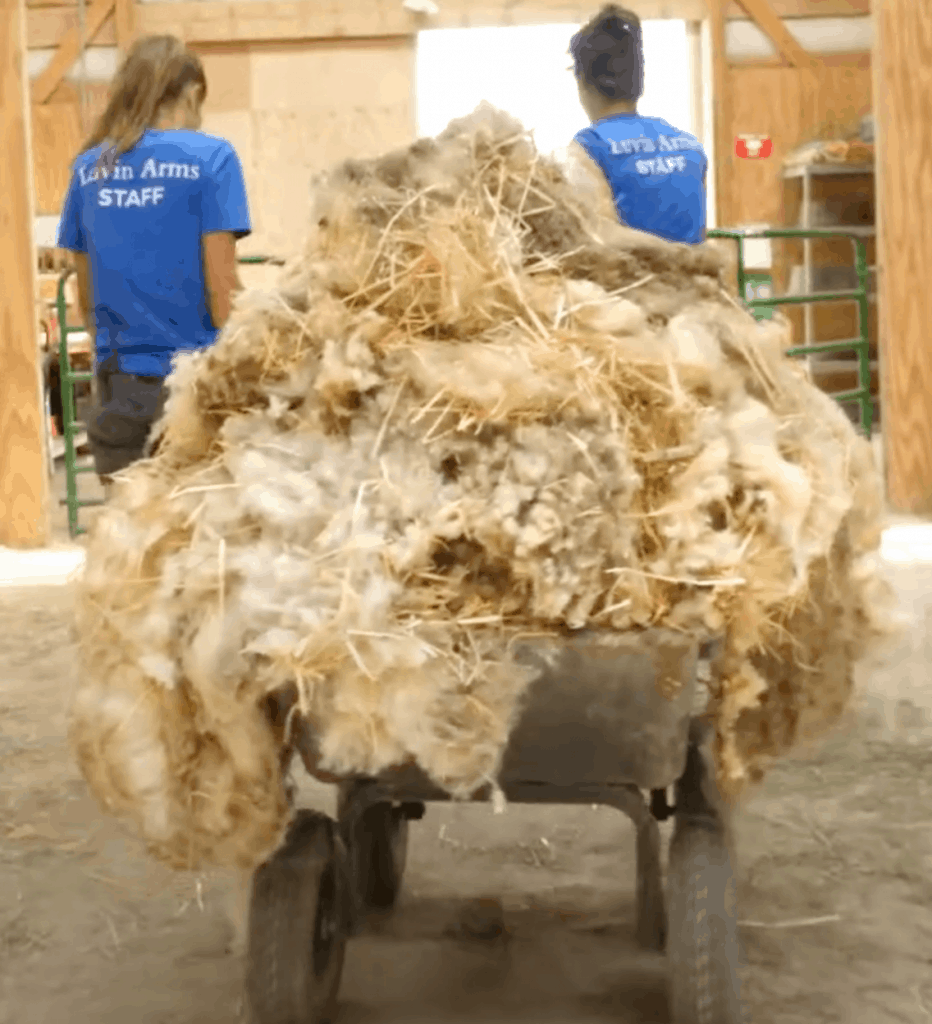
Photo: Luvin’ Arms Animal Sanctuary
Updated March 11, 2025
If you care for sheep, camelids, or other residents bred for their fiber, you should create and abide by a wool/fiber policy for your sanctuary. This covers how your sanctuary manages discarded fiber after residents are sheared. You must regularly shear these residents if they become overburdened by fiber in warm seasons. Not shearing them will cause discomfort, increase heat sensitivity, and increase the risk of health challenges like Pizzle End Rot due to ammonia buildup. It’s not uncommon to rescue sheep who are a mix of multiple breeds, meaning some individuals may have a combination of hair and wool. Therefore, assessing each resident individually is important to determine if they need regular shearing and how often they may need it. Some may only need parts of their bodies shorn, and some may only need infrequent shearing. But what do you do with all the wool and fiber that is left over? That’s what this resource is all about! Read on to learn how different sanctuaries may handle wool and fiber after resident shearings.
Why We Encourage Alternatives To Selling Wool And Fiber
While it may seem innocent enough to raise funds by selling a resident’s wool or fiber, it can send the message that animals and their bodies are products for human use, something sanctuaries try hard to avoid. We know sanctuaries are trying to do their best for their residents and learning every day! (We are too!) Because of this, we wrote a resource about how to avoid direct and indirect harm in a sanctuary environment. Check it out! And we also wrote a resource on alternative ways to fundraise!
Shearing Residents With Fiber
When performed with skill and great care, shearing a resident should not be any more painful for them than a human getting a haircut. However, they may have to be uncomfortably restrained due to their aversion to the loud shearing buzzer, especially as it nears their face. To avoid fear and discomfort, it is best to start building trust and introducing aspects of shearing using positive reinforcement techniques before they need to be sheared. This allows time for residents to become familiar with the process and hopefully feel calmer when the time comes. It is possible to find shearers who are very mindful of the residents, even if they may have differing opinions on the value of a resident’s life. When looking for a shearer, it is important to communicate what techniques are and are not acceptable. You can read more about hiring a shearer or learning to shear yourself here.
Sanctuary Approaches To Wool And Fiber Disposal
If you have fiber-producing residents at your sanctuary, you will have a lot of it to deal with after a year! How you decide to manage the wool and fiber left can depend on a number of factors. Each sanctuary has its own Philosophy of Care (ethical and philosophical principles that guide care decisions). You will find sanctuaries have different practices when choosing how to dispose of wool and fiber. Sometimes it is helpful to learn what others have chosen to do so you have a better idea of what options are available to you. Let us look at six possible ways to dispose of shorn fiber.
Wool For Wildlife
Many different kinds of wild animals are experts at using organic, biodegradable materials (and sadly, garbage from human pollution) to build comfortable nests for themselves and their families. By giving the fiber back to nature, some sanctuaries provide a new perspective to visitors about not valuing residents for what they can provide for humans, but treating them as complex individuals who deserve to exist for their own sake. You can see if any local wildlife find it useful by putting a small amount out, away from resident living areas and roads, and seeing what happens. Some sanctuaries have said they simply leave the fiber near the edge of a forested area on their property and this has worked for them. However, they only have a few sheep residents. It may not be realistic for everyone.
Not Safe For Everyone!
It is important to note that anything string-like over one inch long can pose a hazard for birds or other small animals if it wraps around their neck or appendages. Though wild birds have been seen to take wool directly off a sheep resident’s back! Additionally, some have noted that it isn’t ideal to give to rabbitUnless explicitly mentioned, we are referring to domesticated rabbit breeds, not wild rabbits, who may have unique needs not covered by this resource. residents as they may ingest some of the fiber, causing serious health problems. One way to navigate this is to reach out to the wildlife rehab centers near you to see what they would recommend. They may have a use for the fiber that supports the rehabilitation of wildlife.
Support Wildlife Rehabilitation
Some sanctuaries donate wool and fiber to wildlife rehabilitation centers for recovering individuals and release efforts. Offering wool or fiber to captive recovering wildlife allows them to learn or perform the necessary skills they will need to live in the wild. You might be surprised how many wild friends may use wool to build their nests. If this is deemed unsafe for the individual, wool could serve as stuffing for warm blankets or beds for those needing safe, warm spaces to recover.
Beds For Residents Or Community Animals In Need
Speaking of beds, if any of your staff or volunteers have a sewing machine, you can use fiber left from shearing to make beds for residents. Do you have a TNR (trap-neuter-release) cat program in the community? You can check with local shelters and rescues to find out. You can use the fiber to make beds placed in warm community cat boxes to keep cats warm during the winter months. These beds can be good to have on hand for some resident species as well as they can offer comfort, cushioning, warmth, and protection.
Compost: A Waste Management Solution
Many sanctuaries compost as part of their waste management plans. Sanctuaries can add fiber, used bedding, soiled hay or straw, and food and resident waste into their compost pile. If done properly, composting can reduce parasite and fly populations, limit offensive odors, and be spread onto pasture lands. This prevents sanctuaries from becoming overwhelmed by waste. If you are interested in exploring this option, you should research the best way to compost fiber specifically. You can learn more about general composting at your sanctuary in our Composting 101: The Scoop On Poop resource. For information on manure management, check out the resources below.
Introduction To Manure Management For Farmed Animal Sanctuaries
Advanced Manure Management: Putting Planning Into Action
Sanctuary Garden
A food garden for residents, or a pollinator garden at your sanctuary, provides another option for disposal of wool or other fiber. While you could use compost from your sanctuary, it depends on what has been tossed into the compost. However, wool or other fiber can be used as mulch, thermal protection from frost, and plant hydration. Wrapping wool around the base of trees and other plants helps protect the plants from frost damage.
In hot weather, especially in drier climates, wool can be placed around the base of plants or in plant containers to keep plants hydrated. Wool soaks up and holds water, slowly releasing it into the soil beneath and preventing water from evaporating too quickly. If you have educational programming at your sanctuary, this is an opportunity to approach the topic of the wool industry and why your sanctuary chooses to dispose of wool rather than selling it. Check out the link below for ways you can utilize gardening to help your sanctuary become a supportive space that provides the kind of community enrichment folks need to maintain an animal-friendly way of life. The link below is a great place to explore gardening as a community education opportunity!
Early Elementary-Age Sanctuary Education Lesson Plan #3
Donate To Oil Spill Clean Up Efforts
Another alternative is to give the wool to organizations or people working to clean up an oil spill. Oil spills have a devastating impact at an ecological level, but also at the individual level, with many animals becoming ill or dying from the destructive pollution. Mats are made from wool or other fiber to soak up the oil devastating the environment. The organizations that make these mats generally request that shearing occur on a blanket or other floor covering to prevent straw, bedding, rocks, or other debris from being swept up with their wool or fiber.
Thank you for checking out our resource on ways to dispose of wool and fiber. We hope you found it helpful! If your sanctuary has found another alternative not listed here, we would love to hear about it. Remember, the alternatives discussed above may not fully align with every sanctuary’s philosophy of care. Each sanctuary should bring staff together and write policies and guidelines so everyone can be on the same page. Hopefully, this gives you and your sanctuary team methods of wool and fiber disposal to consider and choose what aligns most with your views and values!
Looking to share this information in an accessible way with other sanctuaries and supporters? Check out and share our infographic below!
What To Do With Wool by Amber D Barnes
SOURCES
7 Ways to Use “Waste” Wool in Your Garden | Spinoff Magazine
